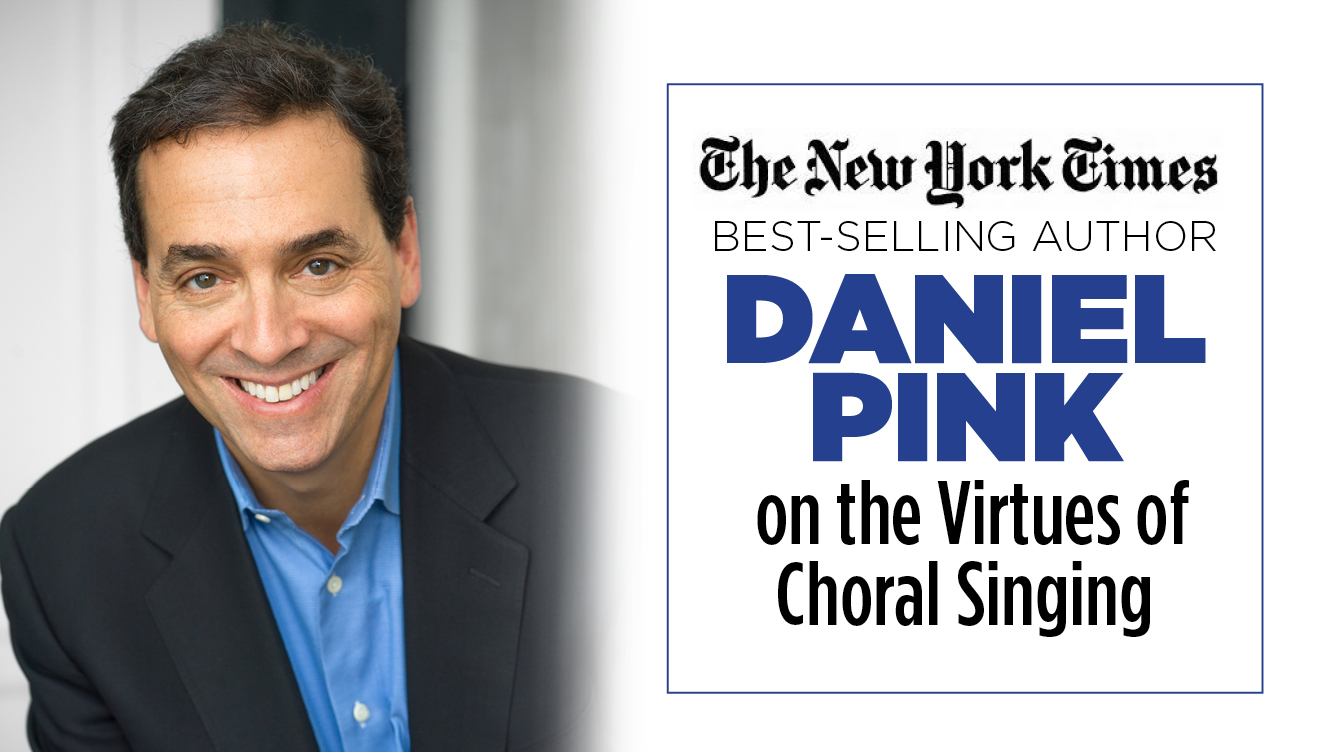
Daniel H. Pink is the author of six provocative books about business and human behavior. His books include the long-running New York Times bestsellers When and A Whole New Mind — as well as the #1 New York Times bestsellers Drive and To Sell is Human. Dan’s books have won multiple awards, have been translated into 41 languages, and have sold more than three million copies. He lives in Washington, DC, with his family.
Upon reading his book When, we were surprised and thrilled to see encouraging scientific studies on the virtues of choral singing specifically. We spoke with Dan recently for more on these findings. Here's our conversation:
DW: Dan, we're big fans of your books, especially the ones about productivity and how our brains function. We were thrilled to discover that you’re an enthusiastic advocate of choral singing. What were some of the physiological advantages your research has revealed?
DAN: My latest book is about the science of timing. And as part of the research I looked into what scientists know about synchronization. That took me to a body of research on choral singing — and I was absolutely blown away.
Choral singing boosts endorphin levels and calms heart rates. It improves lung function. It increases pain thresholds — so that people actually feel less pain after singing in a group. Choral singing even alleviates symptoms of ailments like irritable bowl syndrome.
To me, the most astounding finding was a study that did the following. They measured people’s immunoglobulin levels — which indicates someone’s immune response. Then people sang in a choir. Then they measured again — and people’s immunoglobulin levels increased!
Choral singing is nearly as good for us a physical exercise.
DW: Likewise, what are some of the emotional and spiritual benefits you’ve found?
DAN: They’re also pretty amazing. Choral singing boosts mood — often in significant ways. It also reduces feelings of stress as well as symptoms of depression. It deepens people’s sense of meaning and purpose. And it increases our sensitivity to others.
The key here is that these effects don’t come from simply singing. When people sing alone, scientists have found, they don’t see either the physical or psychological benefits. The effects come from singing together.
DW: Have you personally been involved in a choral group? Could you share about that experience?
DAN: Not since elementary school. What’s interesting — at least to me — is that I remember really enjoying being in a choir. In fact, I was mesmerized by what it felt like to hear all the voices melding together and to be part of a whole that was so much larger than my single self.
DW: At the time of this writing, many choirs are on hiatus because of the possibility of infection due to COVID-19. Are there any substitute activities you might recommend to our readers in the interim?
DAN: That’s a tough one. If you’re sheltering in place with your family, a modest, amateur sing-along might feel good. I’ve also seen some performers — singers and other musicians — producing music together via Zoom. It’s not the same, but I’ve found those very compelling to watch. My best advice is to try out some modest experiments in synchronized collaboration. I’m convinced that someone somewhere might even create an entirely new art form.
DW: Dan, thanks for sharing your time, your research, and your enthusiasm for choir singing with our family of church musicians all across America and the world!
If you enjoyed the research on choral singing and its positive effects, make sure you SHARE this blog!
For more from Dan Pink, go to www.danpink.com
Check out these other blogs from Discover Worship on the topic of Choral Singing:
- The Critical Importance of Church Choirs
- 5 Compelling Reasons to Do More A Cappella Singing
- 4 Strategies to Help Your Choir Improve Their Sight-Reading Skills
- The Worship Leading Choir – An Interview with Dave Williamson
- 10 Steps to Launching Your Own Singing School
- Are Choirs Still Relevant in Modern Worship?


